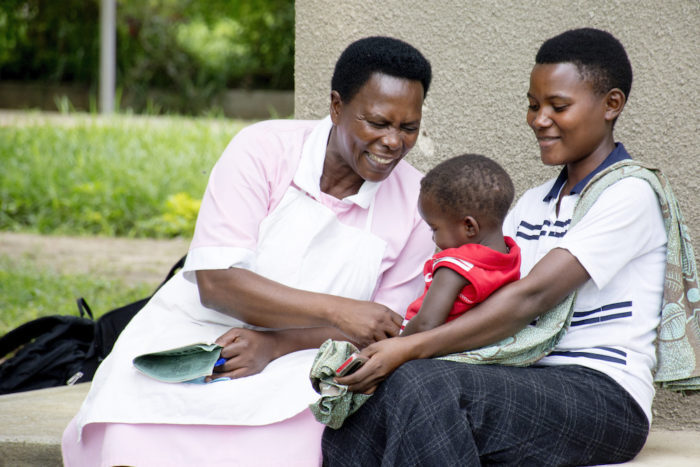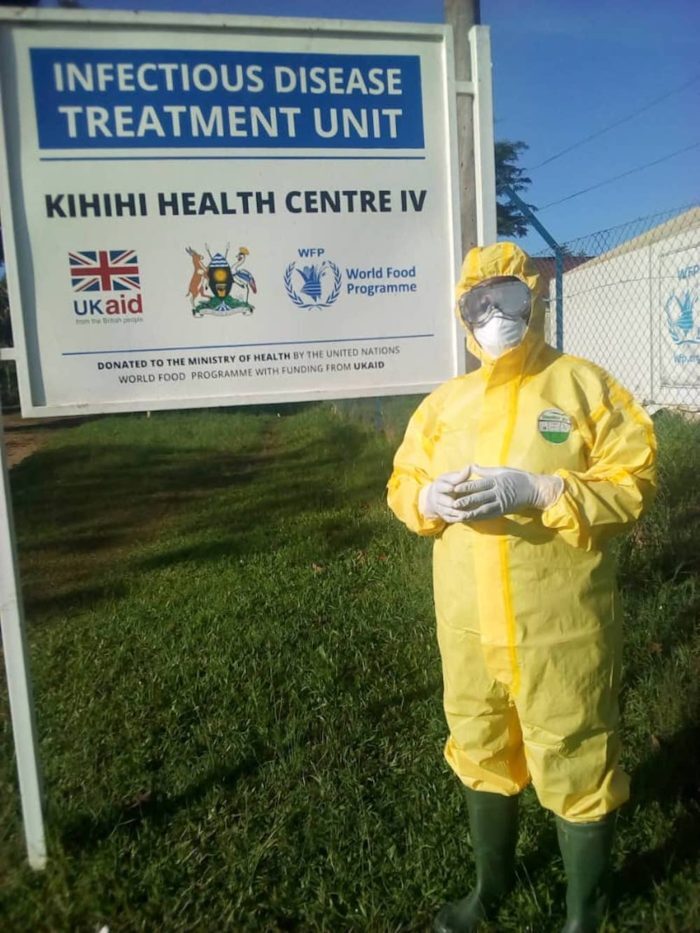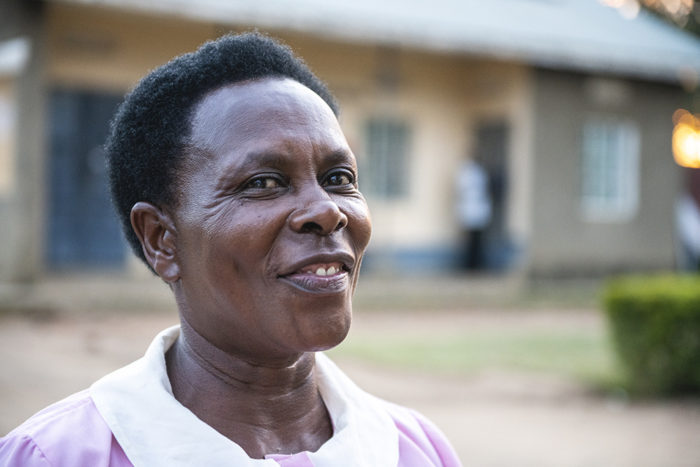
COVID-19 has rapidly changed the routines of frontline health workers around the world. This is the story of Dina Kesiime, a nurse working on the Uganda/DRC border.
On a normal day, Nurse Midwife Dina Kesiime spends her time counseling and managing pregnant women and lactating mothers to ensure that their children will be HIV-free. She administers the program for the prevention of mother-to-child HIV transmission (PMTCT) program at Kihihi Health Center IV in southwest Uganda—with support from the Elizabeth Glaser Pediatric AIDS Foundation (EGPAF) through the USAID RHITES -SW Project.
These days she is also focused on COVID-19 screening. Dina is the in-charge of a state-of-the-art infectious treatment unit at Kihihi HC IV. The unit was built through a partnership of the Uganda Ministry of Health and the World Health Organization (WHO) in response to Ebola. Kihihi HC IV is in Kanungu District, bordering the Democratic Republic of Congo (DRC), which experienced its tenth Ebola outbreak in August 2018.
The Ebola Treatment Unit has now been designated the COVID-19 Treatment Unit. The team has now been oriented on COVID-19 in preparation of the creeping pandemic. Dina is part of a larger team that includes a field screening team at the DRC border at Ishasha and a rapid response team with an ambulance that can immediately pick up any people in the community who exhibit symptoms of COVID-19. They also monitor a hotline set up so that community members can alert the unit of suspected cases. Both at the health center and at the border the unit implements strict infection control measures, including physical distancing, handwashing, and temperature measurement.
“If anyone has a fever above 37.5 Celsius [99.5 Fahrenheit], we immediately take them into an isolation room to take a thorough history,” says Dina. “One person will do the questioning and initial checks while another documents the responses. You never know whether the person will get sicker quickly [and become unresponsive]. We need to know where they are from, check other symptoms, find out who they have been with before they came into the center.”
The COVID-19 team dresses in full protective gear during these procedures. The unit is divided into a green section for staff, self-contained with anything they need in case they have to stay at the unit for a while, and a red section with isolation rooms, monitoring spaces, a laboratory, and clinical rooms.
We are very serious, and every step is carefully taken to protect everyone. Nurse Midwife Dina Kesiime
“We are very serious, and every step is carefully taken to protect everyone,” Dina says. The treatment team maintains physical distance from colleagues and family members to protect them. “After we take the patient’s history, the laboratory technician specific to the unit takes a sample to send to the Uganda Virus Research Institute in Entebbe to test for Covid-19,” Dina explains. “Meanwhile we treat presenting issues like dehydration, pain, high temperature, and monitor the person in isolation.”
“Recently we had a self-reported case,” says Dina, “a man who had been in Dubai who heard on the news that they were cases of people who had traveled from the country that had tested positive [for COVID-19]. We took him on, took the history and isolated him.”
 “Some of the other health workers were nervous about having COVID-19 team members cross through any of their units, even when we had the gear off and had sanitized. But the team did the review. We isolated him and took the samples, which were sent through for advanced testing. They were hard days, but the team was relieved when the tests came back negative.”
“Some of the other health workers were nervous about having COVID-19 team members cross through any of their units, even when we had the gear off and had sanitized. But the team did the review. We isolated him and took the samples, which were sent through for advanced testing. They were hard days, but the team was relieved when the tests came back negative.”
Nurse Dina and her colleagues are alert to the fact that sometimes cases presenting as COVID-19 may be a common cold or malaria. Still, they keep them on alert and treat it as if it could be COVID-19. Nothing is left to chance.
Throughout this new health crisis, Dina continues to attend to her PMTCT activities. She reviews clinic records to ensure that missed appointments are followed through and that the pregnant women and lactating mothers continue to be supported. Working with the peer network, she has intensified outreach for mothers, especially those living with HIV. Cell phones have become more vital than ever for keeping in touch.
Dinah works with the counselors to continue to emphasize adherence to HIV medication.
At the facility Dina spaces appointments so that only a few mothers are called at a time to keep the clinic from becoming congested. Dinah works with the counselors to continue to emphasize adherence to HIV medication and immunity strengthening through eating fruit and drinking clean water. They tell their clients that suppressing the HIV virus through adherence to treatment will help their bodies fight COVID-19 if they become sick. The staff also communicates, key COVID-19 prevention practices like handwashing. Mothers are encouraged to protect themselves and their entire homes so that they will deliver healthy babies and stay healthy themselves.
Dina and her staff know that they need to keep themselves healthy so that they can continue to serve their community.
“It is not easy. We worry [about ourselves], too,” says Dina. “One day I started feeling feverish, and I imagined, ‘Oh God, have I become sick?’ But I wasn’t.”






